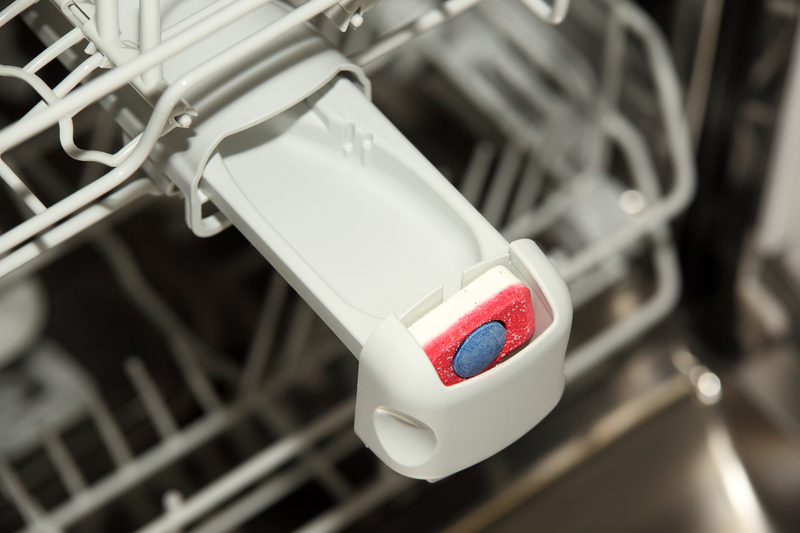Essential Steps to Keep Your Bathroom Mold-Free
Posted on 06/09/2025
Essential Steps to Keep Your Bathroom Mold-Free
Bathroom mold is a common problem that plagues many homes. With moisture, warmth, and limited ventilation, bathrooms provide ideal conditions for mold growth. However, by taking the right precautions and following proven methods, you can keep your bathroom mold-free and ensure a healthier living environment for you and your family. This comprehensive guide will walk you through the essential steps to prevent mold growth, effective cleaning routines, and maintenance tips for a perpetually fresh and clean bathroom.
Why Does Mold Thrive in Bathrooms?
Bathrooms are exposed to high humidity and dampness daily. Steam from hot showers, splashes from sinks and tubs, and occasional leaks combine to create an environment where mold spores flourish. Mold needs only three things to grow: moisture, organic material (like dust, soap scum, or grout), and warmth. Understanding these conditions is the first step in your mission to keep your bathroom mold-free.

Health Risks Associated with Bathroom Mold
Exposure to bathroom mold is more than just a cosmetic problem. Mold can compromise indoor air quality and trigger allergic reactions, respiratory issues, and exacerbate conditions like asthma. Some molds, such as black mold (Stachybotrys chartarum), emit harmful mycotoxins that pose significant health risks. That's why it's crucial to stay vigilant and prioritize mold prevention.
Essential Steps to Prevent Bathroom Mold
1. Improve Bathroom Ventilation
One of the most effective ways to prevent mold in your bathroom is to enhance ventilation. Adequate airflow removes excess moisture and creates an environment unfavorable for mold growth. Here's how you can boost ventilation:
- Install a high-quality exhaust fan: Ensure your bathroom fan vents to the exterior, not just into the attic. Run the fan during and for at least 20-30 minutes after hot showers.
- Open windows and doors: If possible, crack open a window or leave the door ajar after showering to let air circulate and dissipate humidity.
- Keep vents and air grilles clear: Don't block airways with towels or storage bins. Clean them regularly for optimum air flow.
2. Control Humidity Levels
Humidity control is essential in the battle against bathroom mold. Aim to keep relative humidity below 50%. Tools and practices that help include:
- Use a dehumidifier: If your home is naturally humid, a small, portable dehumidifier in the bathroom can work wonders.
- Monitor with a hygrometer: Measure humidity to ensure it stays in check and adjust ventilation as necessary.
- Wipe down moist surfaces: After showers or baths, use a squeegee or towel to remove water from tiles, walls, and glass enclosures.
3. Clean and Dry All Surfaces Regularly
A consistent cleaning routine is vital for keeping the bathroom mold-free. Mold spores can survive on soap scum, hair, and dust. To stay ahead:
- Disinfect at least weekly: Clean tiles, grout, tubs, and sinks with a mold-killing cleaning solution or vinegar spray. Don't forget faucets and hard-to-reach corners.
- Dry wet surfaces immediately: Don't let puddles sit on the floor or counters. Quick drying removes moisture mold needs to thrive.
- Wash towels and mats frequently: Damp fabrics are major mold magnets. Use hot water to kill spores and always hang them to dry after use.
4. Seal Grout and Caulk Regularly
Cracked or missing grout and caulk provide ideal crevices where moisture--and subsequently mold--can settle. Protect your bathroom by:
- Inspecting caulk and grout quarterly: Look near tubs, showers, and sinks for signs of deterioration.
- Repairing and resealing when needed: Use a mold-resistant silicone caulk for long-lasting protection. Re-seal grout periodically to prevent moisture infiltration.
5. Reduce Clutter and Improve Organization
An untidy bathroom encourages mold growth by trapping moisture and preventing proper cleaning. Keep surfaces clear by:
- Storing bottles and toiletries off surfaces: Use wall-mounted racks or corner caddies to keep items elevated and surfaces dry.
- Minimizing use of fabric organizers: These can stay damp and harbor mold, so opt for plastic or wire alternatives.
6. Opt for Mold-Resistant Materials
If you're renovating or updating your bathroom, select materials that actively discourage mold. Consider:
- Mold-resistant paint: Specialized paints contain anti-microbial agents for extra protection.
- Moisture-resistant drywall: Green board or cement board are ideal for high-moisture areas.
- Non-porous fixtures: Porcelain, glazed tiles, and glass are less likely to harbor mold than unglazed surfaces or fabric shower curtains.
What to Do If You Find Mold in Your Bathroom?
Despite your best efforts, small amounts of mold can still appear, especially in hidden areas. If you spot dark patches, fuzzy spots, or notice a musty odor, it's important to act fast:
- Wear protection: Use gloves, a mask, and ventilation to avoid inhaling spores.
- Clean with targeted cleaners: Scrub the area with a solution of vinegar and water, hydrogen peroxide, or a commercial anti-mold spray.
- Discard porous materials: Dispose of moldy shower curtains, rugs, or mats that can't be thoroughly cleaned.
- Address underlying issues: Investigate and fix leaky pipes, broken fans, or clogged drains to prevent recurrence.
If the mold covers an area larger than 10 square feet, or if it keeps returning, consult a professional mold remediation service.
Smart Bathroom Habits for Mold Prevention
Implementing consistent habits will drastically reduce mold risk. Teach all household members to:
- Hang up wet towels after each use instead of leaving them balled up or on the floor.
- Leave the bathroom door or window open briefly after showers to release trapped moisture.
- Check for leaks every month under sinks and around toilets, promptly fixing any problems found.
- Avoid overwatering plants or placing them in stagnant water within the bathroom, as this can create excess humidity.
Common Bathroom Mold Hotspots
Mold tends to appear in specific spots first. Be extra vigilant in the following areas:
- Grout lines and tile corners, especially in showers and around bathtubs.
- Behind and under sinks where leaks may go unnoticed.
- Ceilings and upper walls where steam can condense.
- On shower curtains, bath mats, and under shampoo bottles.
- Inside exhaust fans and ventilation ducts.
Natural Solutions for Cleaning and Preventing Bathroom Mold
In addition to commercial cleaners, several natural solutions are effective against bathroom mold:
- White vinegar: Spray straight onto moldy spots, let sit for an hour, then scrub and rinse. Vinegar kills up to 82% of mold species.
- Baking soda: Mix with water to make a paste and scrub tiles and grout for gentle, non-toxic cleaning.
- Tea tree oil: Add a teaspoon to a cup of water in a spray bottle. Mist affected areas and don't rinse for ongoing protection.
These methods are eco-friendly and minimize harsh chemical use, making them ideal for regular weekly maintenance.

Frequently Asked Questions about Keeping Your Bathroom Mold-Free
How often should I clean my bathroom to prevent mold?
Wipe down tiles and surfaces several times a week; do a thorough disinfecting clean at least once a week. The more often you clean, the less opportunity mold has to grow.
Are there types of paints that help prevent mold?
Yes! Look for moisture-resistant, antimicrobial, or mold-inhibiting paints during your next renovation to add an extra layer of defense.
Can over-the-counter mold sprays harm my pets or children?
Some chemical cleaners can be harsh. Always use as directed, ventilate well, and keep pets and children away during cleaning. Natural remedies like vinegar or baking soda are safer alternatives.
When should I call a professional for bathroom mold?
If mold covers a large area, causes structural damage, or keeps returning despite your best efforts, contact a certified mold remediation specialist immediately.
Conclusion: Keep Your Bathroom Fresh, Clean, and Mold-Free
A mold-free bathroom is achievable with the right approach. By maintaining optimal ventilation, controlling humidity, cleaning regularly, sealing vulnerable areas, and adopting smart habits, you can dramatically reduce the risk of mold. Not only will your bathroom stay sparkling clean and odor-free, but your wellbeing--and that of your family--will be better protected. Start implementing these essential steps today for long-lasting mold prevention and enjoy a healthier, happier bathroom!



.png)